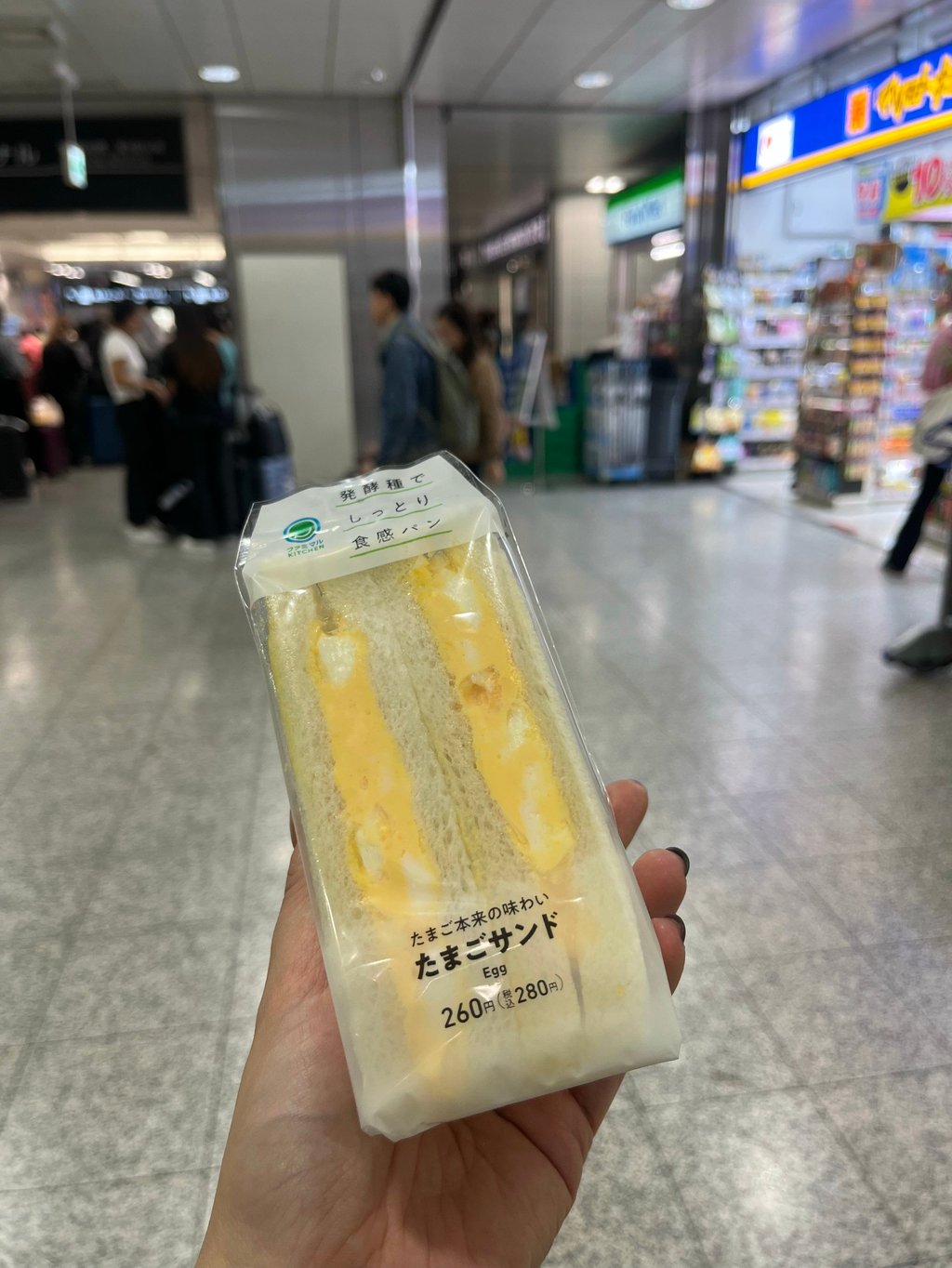The excitement is palpable. Tamago sando love runs deep among foreign travellers to Japan, though that may befuddle locals. It is often the first thing I grab when I get off the plane in Tokyo to stave off hanger while I head to my hotel, and sometimes I hoard one the night before an early flight out, for breakfast.
The late Antony Bourdain was a fan. In 2013, he posted a photo of a 240 yen egg salad sandwich with the caption “The Unnatural, Inexplicable Deliciousness of the Lawson’s egg salad sandwich”. Lawson is one of the main convenience store chains in Japan, alongside 7-Eleven and Family Mart.
However, initial social media postings of the egg salad sandwiches in the US are concerning. Photos posted by the website Eater show the “Simply Egg Salad Sandwich” looking woefully pale and wan, with the description on the package listing the ingredients as “lightly seasoned hard-boiled eggs blended with reduced fat mayonnaise [my emphasis] and Dijon mustard on fluffy milk bread”.
I will briefly overlook that the crusts have been left on the sandwich because the line about reduced fat mayonnaise is what truly ruins the essence of the sando here.
The genuine article, as many tamago sando stans will know, is a fluffy, cloudlike mix of sunny yellow eggs whipped with rich Kewpie mayonnaise, a signature condiment and Japanese national treasure.
“Tamago sando uses Japanese mayonnaise (with Kewpie mayonnaise being the most recognisable) which gives the egg filling an extra tang and creaminess,” says Namiko Hirasawa Chen of Japanese recipe site Just One Cookbook, whose recipe for tamago sando is a top result on Google.
The secret to Kewpie’s intensely eggy flavour is simple: it only uses yolks. Every 500g of Kewpie mayo contains four egg yolks, with apple cider vinegar and canola oil being the other main ingredients.
It is a recipe that has been perfected over decades – in 2025, Kewpie mayonnaise will celebrate the 100th anniversary of its creation.
The condiment was introduced in 1925 by founder Toichiro Nakashima, who was inspired by his trips to the UK and the US as an intern with Japan’s Department of Agriculture and Commerce.
He saw that mayonnaise used in potato salads in the US had high nutritional value and, wanting to help improve his countrymen’s health and physique, he set a goal of creating a mayonnaise that would become a pantry staple and daily necessity.
His mayonnaise, as a result, used double the amount of eggs compared with American versions at the time.
On a recent trip to Tokyo, I decided to delve deeper into Nakashima’s world of Japanese mayonnaise and booked myself onto a tour of the relatively obscure Kewpie Mayo Terrace. Free to the public, it is absolutely worth the 30-minute train ride out of Shibuya station in central Tokyo.
Housed in Kewpie’s former mayonnaise factory in Sengawa, in the city of Chofu, “Mayo Terrace” is a delightful experience for both kids and the young at heart.
Your journey starts in the colourful Kewpie kitchen, where you are invited to eat its potato salad while listening to a brief introduction to the brand, as well as some inventive recipe ideas using mayonnaise.
I will not spoil too much of the experience, but rest assured that there are plenty of social-media-friendly set-ups and interactive elements that had us cackling like schoolchildren.
We discovered the secrets behind Kewpie’s deceptively simple bottle design (nitrogen and multilayered oxygen-blocking material are involved) and learned the staggering figures behind the production of their signature mayonnaise – for one, they use 10 per cent (about 250,000 metric tonnes) of the eggs that Japan produces annually.
Naturally, the company produces different mayonnaise products for different markets. Keen Kewpie fans in the US have noted that the versions manufactured there have a whiter hue, more watery texture and no MSG, which gives the Japanese product its distinctive umami character.

Here is hoping that when the tamago sando properly launches in the US, it will be using Japan-manufactured Kewpie for the authentic flavour.
As for me, I think I will be keeping the sandwich as part of my own personal “welcome back to Japan” ritual.







